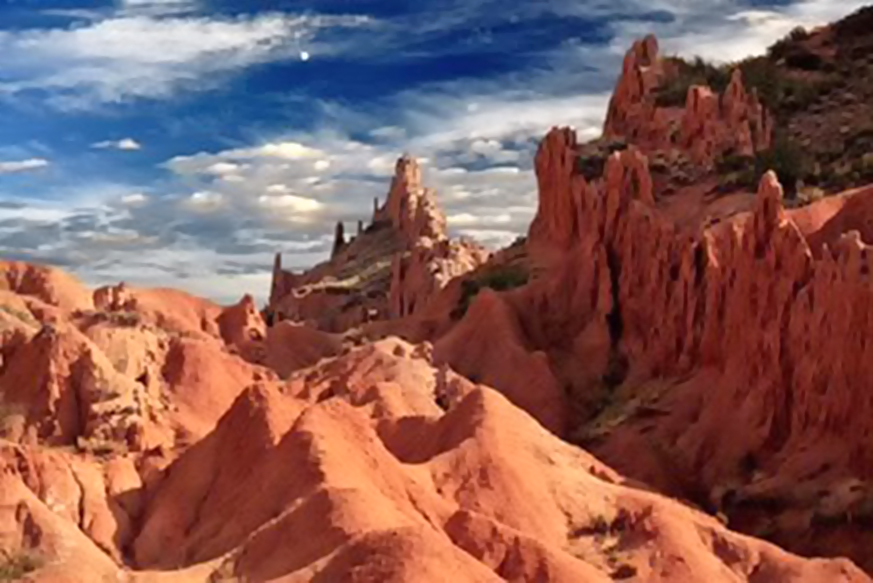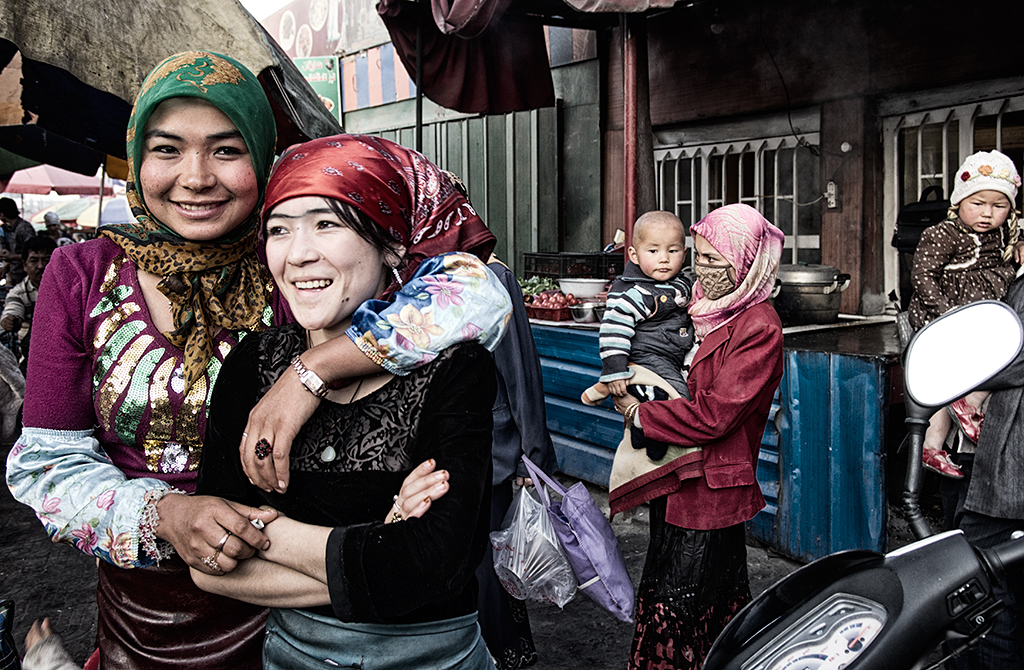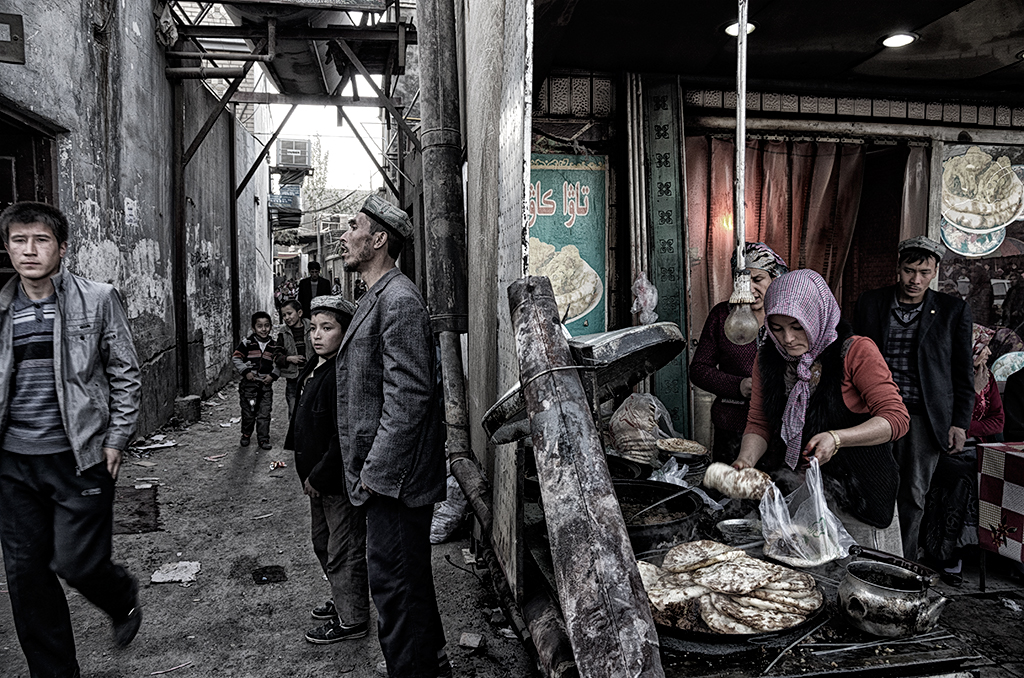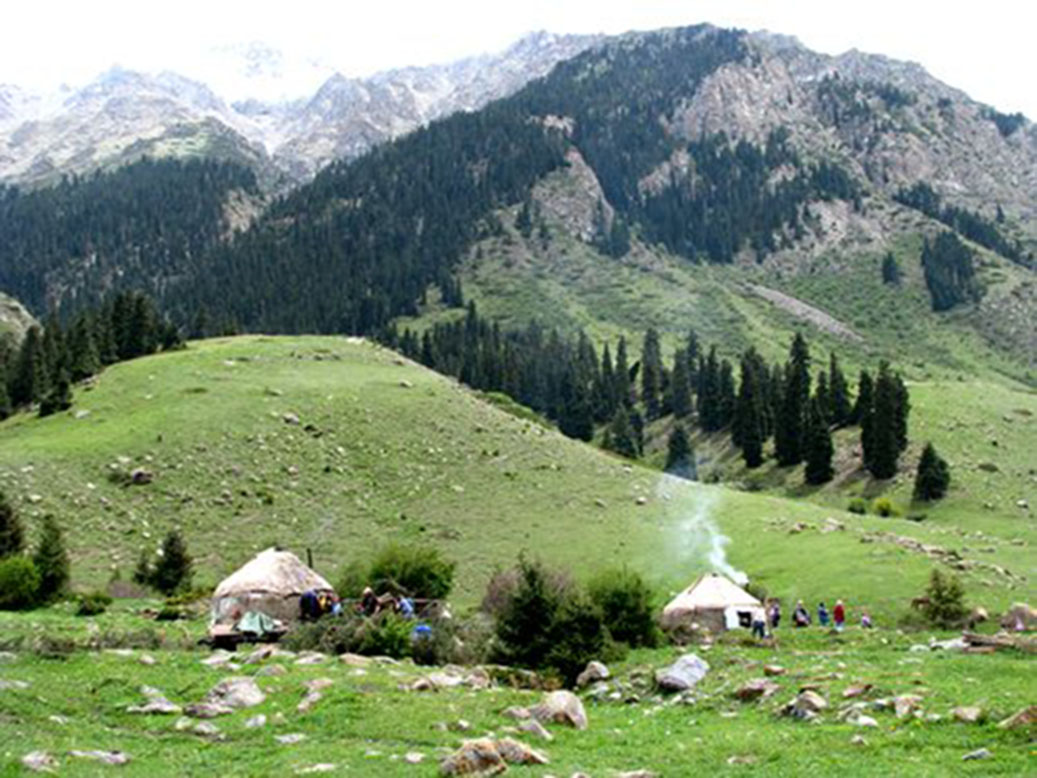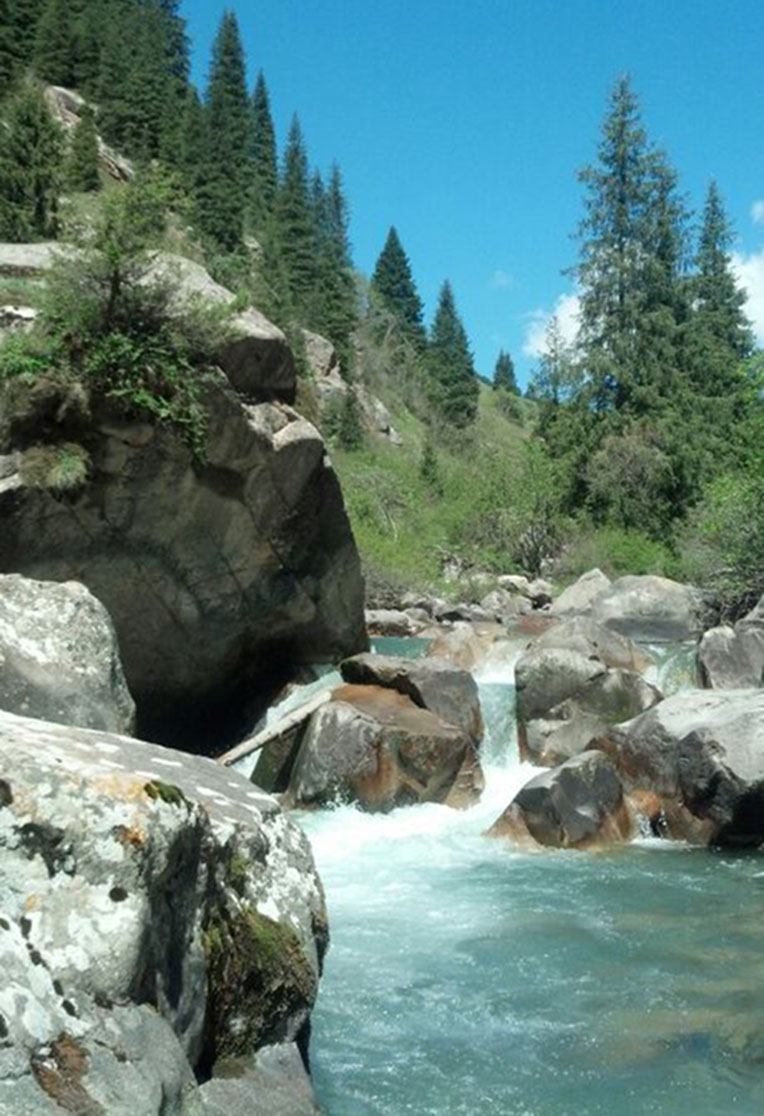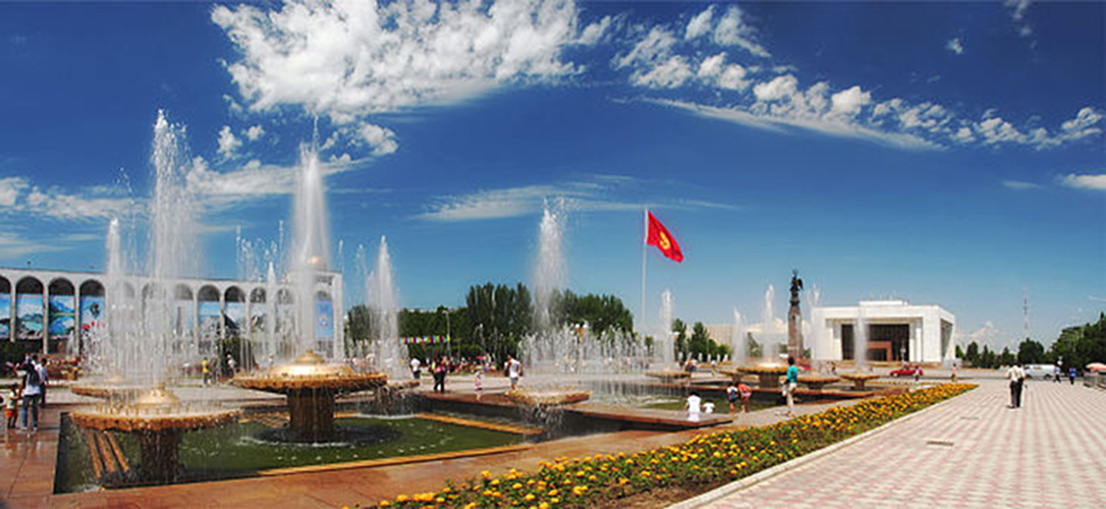- Introduction
The Silk Road was collectively an ancient network of trade routes that were central to cultural interaction through regions of the Asian continent connecting the West and East from China and India to the Mediterranean Sea. You can witness first-hand the sights, hardships, cultural diversity and culinary delights that are unparalleled in this world.
We have also chosen the colourful autumn season for this visit. You will be able to capture some of the awe inspiring landscapes Kyrgyzstan has to offer.
Photosafari has organised three journeys on the Old Silk Road in China on three different occasions. We have journeyed from Xian to Hotan and Kashgar across the Taklimakan Desert from three different starting and ending points. This year we continue to follow the Old Silk Road from Kashgar, across the Chinese Border to Kyrgyzstan. This involves driving through the Torugart Pass (3,752m) to Bishkek in Kyrgyzstan.
The journey starts from Urumqi. From here, we will fly to Kashgar where we will start our road journey. Kashgar was a very important oasis town along to Old Silk Road. It is the gateway to China. From here travellers could go to the West through two mountain passes. The first is the Khunjerab Pass along the Karakorum Highway to Pakistan and India and the second is through the Torugart Pass to Central Asia.
- Kashgar, the Oasis Town
In Kashgar, we will visit the famous Sunday market. This is probably the largest Sunday Market in the World. It used to be a trading spot for traders from the world over during the ancient Silk Road days. There are so much to see and photograph here. After lunch, we will visit Shipton’s Arch. This is the highest natural arch formation in the world. In May 2000, National Geographic sponsored a documentary trip to Shipton’s Arch and it was published in their magazine.
- From Kashgar to Torugart Pass.
The next morning we will drive towards the Chinese-Kyrgyzstan Border. A welcoming team together with a bus or van from Kyrgyzstan will be waiting to take us across the border to Kyrgyzstan. We will put up a night at Tash-Rabat.
On this Old Silk Road, it is the whole experience of the journey rather than the destination is the objective. Kyrgyzstan and other countries in Central Asia used to be part of USSR. USSR has since broken up and all these countries have obtained their independence and are now self-ruled.
Kyrgyz forms the majority of the 5.7 million population. The minorities are Uzbeks and Russians. Kyrgyz believe in Islam, hence, it is easy to find halal food along this journey.
Kyrgyz along the route are traditionally nomads. They move from place to place depending on the seasons and pastures. You will experience first-hand how nomads of Central Asia lives.
You will have the opportunity to witness Kyrgyzstan’s national horse games such as Ulak-tartysh (wrestling on horseback for a goat’s carcass), Tyiyn enmei (picking up a coin from the ground), Kyz kuumai (chasing after a bride), and Er Enish (wrestling on horseback).
We will be introduced to the nomadic life skills of falconry. Hunting with the golden eagle is an ancient tradition that dates back to the Mongol conquest of Central Asia around the 12th and 13th centuries. A fine eagle and good horse cost similarly and were the main indicators of their owner’s wealthy. Training of eagles usually take 3 to 4 years and it has to be trained by one person.
Along the way we will stop at villages or nomadic settlement where you will mingle with the locals to understand their way of life. There will be lots of opportunity for human interest photography.
Part of Kyrgyzstan is situated in the Tian Shan Mountains. This has sub-temperate climate. The beautiful snow-capped mountains, rivers and alpine vegetation provide many scenic spots for landscape photography.
- Accommodation
It is not easy to find modern day accommodation along the route to Bishkek. What we will be staying is a two or three person yurts (traditional round tents) on a part of the journey. All yurt are based on twin or tri sharing. There is no single accommodation available. In some areas, we will be staying is guesthouses operated by the locals. In the major towns, we will provide hotel accommodation where you can get your own single room if you desire. Please check the schedule of accommodation at various places.
- What is a Yurt?
A yurt is the traditional dwelling of pastoral nomads in Central Asia. Yurts are portable, sturdy, round felt-covered tents that you’ll see often as you are taking tours of Kyrgyzstan. A nomadic family can set up one yurt within a matter of 4-5 hours. The walls of a yurt are made of wooden latticework and the roof of curved poles that run from the latticework to a central circular wooden piece up above. This circular opening provides an outlet for smoke as well as the entrance of sunlight. The yurt is central to nomads in Kyrgyzstan; it provides a place to eat, sleep, host guests, and provides protection from the elements.
Staying in yurts will ensure that you will be served lots of tea and authentic Kyrgyz cuisine. There is no better way for you to immerse yourself into this nomad culture
In Kashgar, we will be using a tourist bus of 25 or 44 seats. However, in Kyrgyzstan, we will be using 18 seater 4×4 Mercedes Sprinter Vans. There will be some off-road driving. Each van will accommodate 10 participants with enough room for luggage and camera equipment.
- Flights provided
We provide the following flights:-
- Flight from Urumqi to Kashgar
- Flight from Bishkek to Urumqi.
- Food
Xinjiang and Kyrgyzstan are both predominantly Muslim areas. Getting halal food is not a problem. Traditional Kyrgyz food revolves around mutton, beef and horse meat, as well as various dairy products. The preparation techniques and major ingredients have been strongly influenced by the nation’s historically nomadic way of life. Thus, many cooking techniques are conducive to the long-term preservation of food. Mutton and beef are the favourite meats. In larger towns, non-traditional Kyrgyz food is available. Russian cuisines are also available.
Not all meals are provided. Where ever possible, we will allow participants to buy the food of their choice. We have applied this strategy successfully in all our previous Old Silk Road journeys. Not everyone is a fan of mutton, beef or horse meat. Please check the itinerary for the meals provided.
- Weather
The temperature in September is cool probably around 5 to 20 degC. However, the temperature varies greatly due to the different elevations of the places that we are visiting. It can be very cold at night. In some mountainous areas, it may even snow in summer. A good down jacket and layering is recommended.
Itinerary
Day 1: 2nd Sept (Friday) 2016
Flight from Kuala Lumpur to Urumqi
- Pick up from airport and transfer to Hotel
- Free and easy
- Meals on your own
Day 2: 3rd Sept 2016 (Saturday) (D)
Flight from Urumqi – Kashgar
- Check-out from hotel
- Transfer to Urumqi airport
- Pick-up from Kashgar airport. Kashgar was a very important Oasis town along the Old Silk Road. It is from here that merchants would restock their supplies, camels, trade etc before going through the Karakorum Highway and Khunjerab Pass to Pakistan, India and Torugat Pass to Kyrgyzstan. Its history is as long as the Old Silk Road.
- Check-in hotel
- Lunch on your own
- Visit Id-Kah Mosque, the largest mosque in China and its surrounding areas if time permits.
- Dinner
Day 3: 4th Sept 2016 (Sunday) (B,L,D)
Around Kashgar
- Breakfast in hotel
- Visit Sunday Market, the largest bazaar in Xinjiang.
- lunch
- Visit Shipton’s Arch. This place is about 2 to 3 hours’ drive from Kashgar. In May 2000, National Geographic sponsored a documentary trip to Shipton’s Arch and since then, it has become one of the important places to visit in Kashgar.
- Dinner
- Back to hotel
Day 4: 5th Sept 2016 (Monday) (B,L,D)
Kashgar- Torugart- Tash-Rabat
- Breakfast
- Check-out of hotel
- Drive to the Chinese-Kyrgyzstan border
- Lunch en-route
- Meet Kyrgyz Driver and bus at border
- Transfer to Tash Rabat.
- Explore the area around Tash Rabat. Tash Rabatis a well-preserved 15th century stone caravanserai in At Bashy district, Naryn Province, Kyrgyzstan located at the altitude of 3,200 meters. It was originally built as a Nestorian monastery in the tenth century
- Check-in Yurt Camp
- Dinner at Yurt Camp.
- You can shoot star trails in this village (optional)
- Free and easy
Day 5: 6th Sept 2016 (Tuesday) (B,L,D)
Tash-Rabat-At-Bashi- Son-Kul
- Breakfast at Camp.
- Drive to At-Bashi Village. This is a small village with about 10,000 inhabitants. We will explore the village
- Lunch at a homestay in At-Bashi.
- Drive to Son-Kul Lake. This lake is situated at an altitude of 3016m. Its size is about 270 sq km. It is dimensions is about 29km long and 18 km wide. This area is considered as one of the most scenic alpine lake in the country.
- Check-in at Yurt Camp
- Dinner at Yurt Camp
- Free and easy
Day 6: 7th Sept 2016 (Wednesday) (B,L,D)
Son-Kul – Kochkor
- Breakfast
- Demo of national horse games; Ulak-tartysh, Tyiyn enmei, Kyz kuumai, Er Enish.
- Horseback riding for those who wants to try (***optional)
- Lunch at Yurt Camp
- Drive to Kochkor. It is a village with a population of about 10,000 inhabitants
- Visit a Shyrdak production The making of Shyrdak felt rugs is a dying art.
- Check-in Yurt Camp
- Dinner at Yurt Camp.
- Free and easy
Day 7: 8th Sept. 2016 (Thursday) (B,L,D)
Kochkor-Bokonbaevo village (southern shore of Issyk-Kul lake)- Tamga
- Breakfast
- Check-out Yurt Camp
- Drive to Bokonbaevo village. We will witness a demonstration of an age old tradition of using eagles for hunting.
- Lunch at a homestay
- Drive to the Southern Shore of Issyk-Kul lake to Tamga Village.
- Visit the Skazka canyon on the way. The canyon was named due to its bizarre rocky landscape, which for many years has been transformed by wind into fabulous sculptures and formations. Some formations in “Skazka” have been named for their similarity to well-known objects. For example, one set of ridges in the canyon is named “The Chinese Wall” due to its similarity to the Great Wall of China. You can also find what appear to be statues of a hippopotamus, snake, dragon, sleeping giant and even whole castles. Because the different rocks have amazing colors, the rocky statues not only have unusual shapes, but also magical colors.
- Check-in guest house
- Dinner in guest house run by local family.
Day 8: 9th Sept 2016 (Friday) (B,L,)
Tamga- Juuku gorge-Jety-Oguz gorge Karakol
- Breakfast
- Check-out guest house
- Drive to Juuku Gorge. This place is famous for its hot springs. You can see large glaciers and the peak It-Tash (4808 m). In the upper part of the gorge there are many waterfalls and alpine lakes (Juukuchak, Juuku, Chokolyk-Kel, Nizhnee, Maloye, Kashka-Suu, etc.). The color of water in the lakes is surprising and unusual, it can be seen in shades of green, and blue, and purple. Here you can see herds of mountain goats, wild rams, stone martens, deer, snowcocks, chukars and partridges. It’s also interesting to see some monuments of antiquity here: rock paintings of 6th – 1st centuries BC, the graves of ancient Turks and stone sculptures if time permits.
- Packed lunch on the way
- Drive to Jety-Oguz Gorge. It is situated about 25 km South West of Karakol. This is a lush valley with some striking red sandstone rock formations (the “seven Bulls” from which the valley takes its name). famous for its red rock formations.
- Visit “Girl’s Braid”, a waterfall that is a short walk from the path.
- Transfer to Karakol. Karakol is the fourth largest town in Kyrgyzstan. It has a population of about 68,000 people.
- Check-in hotel
- Dinner on your own.
- Free and easy
Day 9: 10th Sept 2016 (Saturday) (B,L)
Karakol- Cholpon-Ata
- Breakfast
- Explore Karakol town.
- Visit Dungan Mosque. This mosque is built in the shape of a Chinese pagoda.
- Visit the wooden Russian Orthodox Church.
- Visit Prjevalskii Museum. Prjevalskii was the great explorer of Central Asia in the 19th
- Drive along the Northern Shore of Issyk-kul Lake.
- Packed lunch on the way.
- Visit Semenovskoe gorge and via the upper small lake. Semenov Gorge, has a length of about 30 km, is located 40 km from the town of Cholpon-Ata. Ak-Suu River flows in the valley, which starts from the glacier. The slopes of the gorge are covered with dense forest of the Tian Shan spruce trees and fragrant herbs. A good place to catch some picturesque mountain scenery.
- Drive to Grigorevskoe gorge. Another scenic vista for landscape photography. The alpine vegetation and the snow-capped Tian Shan Mountains form the backdrop.
- Dinner on your own
- Check-in Resort at Cholpon-Ata.
- Free and easy
Day 10: 11th Sept 2016 (Sunday) (B)
Cholpon-Ata- Bishkek
- Breakfast
- Visit open air museum of petroglyphs (paintings and carvings on rocks)
- Drive to Bishkek via Boom Gorge.
- Visit Burama Towere in Tokmok (the remains of the Kharakhanids khanate)
- Lunch on your own
- Drive to Bishkek
- Dinner on your own
- Check-in Silk Road Lodge Hotel.
Day 11: 12th Sept 2016 (Monday) (B,D)
Around Bishkek
- Breakfast
- Bishkek city tour. Bishkek is the largest and capital city of Kyrgyzstan. It has a population of about 900,000 people. The ethnic composition is about 66% Kyrgyz and 20% Europeans. This city has a lot of Russian influence in culture, architecture and food.
- Lunch on your own
- Visit Ala-Archa Gorge which is about 40km away. Explore the area and a short walk to panorama point for more landscape photos.
- Drive back to Bishkek
- Farewell Dinner and folklore show at Silk Road Lodge’s restaurant.
- Overnight at Silk Road Lodge Hotel
Day 12: 13th Sept 2016 (Tuesday) (B)
Bishkek to Urumqi
- Breakfast
- Transfer to Bishkek airport for flight to Urumqi (departure at 12:20, arrival at 16:15) by Kyrgyzstan Airlines
- Arrive at Urumqi airport
- Pick-up at airport
- Check-in hotel
- Dinner on your own
- Free and easy
Day13: 14th Sept 2016 (B)
Urumqi to Kuala Lumpur.
- Breakfast (if possible)
- Transfer to Urumqi Airport for a flight home.
If you are interested, please email for further details: [email protected]


